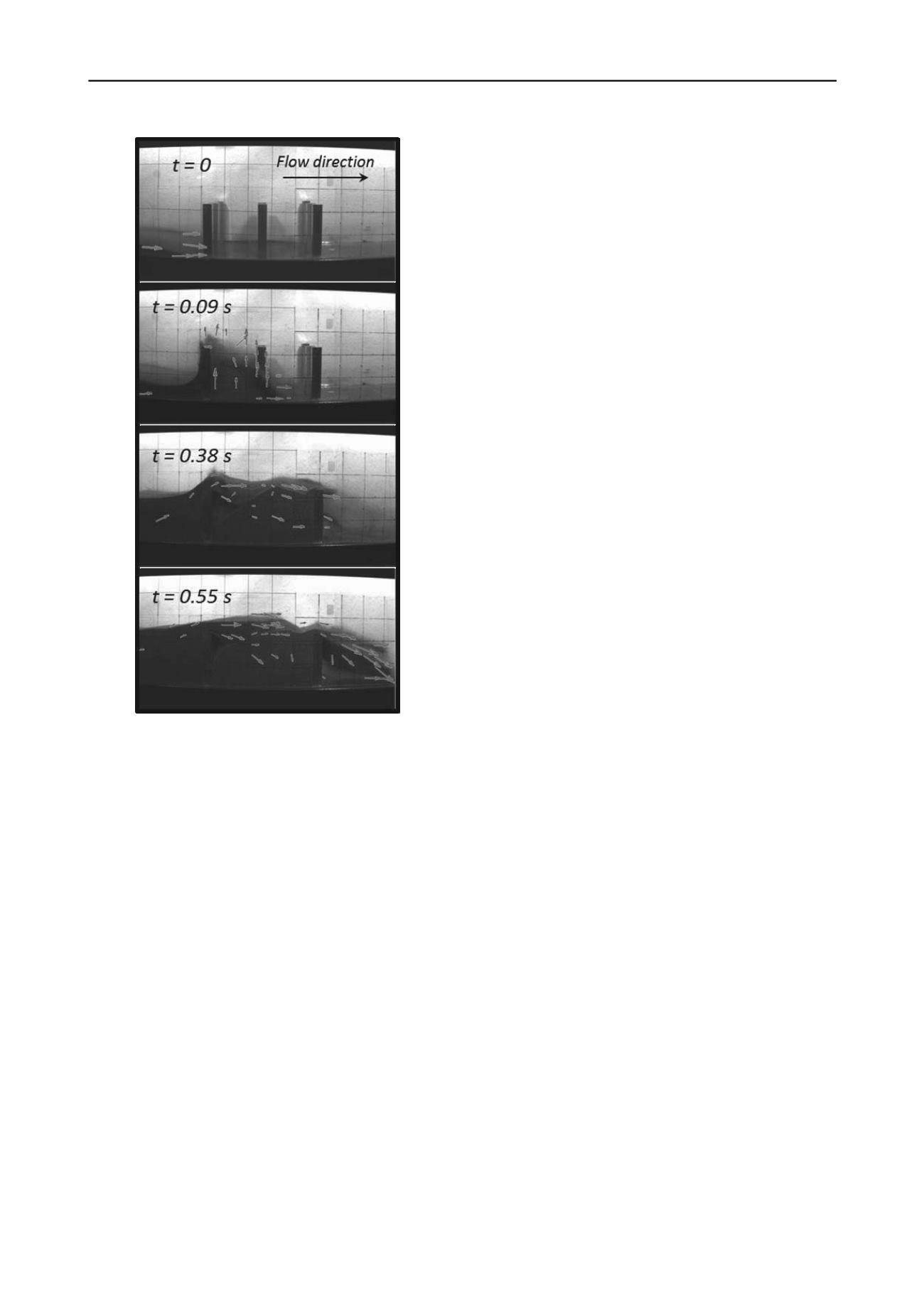
2168
Proceedings of the 18
th
International Conference on Soil Mechanics and Geotechnical Engineering, Paris 2013
7 REFERENCES
Arattano, M., Deganutti, A. M. and Marchi, L. 1997. Debris flow
monitoring activities in an instrumented watershed on the Italian
Alps.
Proceedings of the 1st ASCE International Conference on
Debris-Flow Hazards Mitigation: Mechanics, Prediction and
Assessment
, San Francisco, California, 506-515.
Barbolini, M, Domaas, U., Faug, T., Gauer, P., Hakonardottir, K.M.,
Harbitz, C.B., Issler, D., Johannesson, T., Lied, K., Naaim, M.,
Naaim Bouvet, F. and Rammer, L. 2009.
The design of avalanche
protection dams recent practical and theoretical developments.
European Commission, Luxembourg. 212 p.
Cosenza, E., Cozzolino, L., Pianese, D., Fabbrocino, G., and Acanfora,
M. 2006. Concrete structures for mitigation of debris-flow hazard
in the Montoro Inferiore Area, Southern Italy.
Proceedings of 2
nd
International Congress,
Naples, Italy, 12 p
.
Costa, J.E., 1984. Physical geomorphology of debris flows.
Costa. J.E.;
Fleischer. P.J. (eds.): Developments and Applications of
Geomorphology
. Berlin: Springer, 268-317.
Hákonardóttir, K. M., Jóhannesson, T., Tiefenbacher, F. and Kern, M.
2001.
A laboratory Study of the Retarding Effect of Braking
Mounds in 3, 6 and 9m Long Chutes
, Reykjavík, Veðurstofa
Íslands, Report No. 01007.
Hubl, J., Suda, J., Proske, D., Kaitna, R. and Scheidl, C. 2009. Debris
flow impact estimation.
Proceedings of International Symposium
on Water Management and Hydraulic Engineering
, Ohrid,
Macedonia, 137-148.
Hungr, O., Morgan, G.C. and Kellerhals. 1984. Quantitative analysis of
debris flow torrent hazards for design of remedial measures.
Can.
Geotechnical Journal,
21, 663-677.
Ikeya, H. and Uehara, S. 1980. Experimental study about the sediment
control of slit sabo dams.
Journal of the Japan Erosion Control
Engineering Society,
114, 37-44 (in Japanese).
Johannesson, T. 2001. Run-up of two avalanches on the deflecting
dams at Flateyri, northwestern Iceland.
Annals of Glaciology,
32(1), 350-354.
Law, R.P.H., Zhou, G.D., Chan, Y.M. and Ng, C.W.W. 2007.
Investigations of fundamental mechnisms of dry granular debris
flow.
Proceedings of the 16
th
Southeast Asia Geotechnical
Conference
, Malaysia.
Law, P.H. 2008.
Investigations of Mobility and Impact Behaviour of
Granular Fows
. MPhil Thesis, The Hong Kong University of
Science and Technology, Hong Kong.
Figure 6. Preliminary results using PIV method
5 CONCLUSIONS
A series of systematic flume experiments modelling debris-
baffle interaction has been conducted. The influence of
increasing the row number on frontal debris velocity is
presented and some preliminary conclusions are drawn as
follows:
Mizuyama, T. 2008. Structural countermeasures for debris flow
disasters.
International Journal of Erosion Control Engineering
1(2), 38-43.
Ng, C.W.W., Choi, C.E., Kwan, J.H.S, Ho, K.S.S and Koo, R.C.H.
2012. Flume modelling of debris resisting baffles.
Proceedings of
AGS Seminar on Natural Terrain Hazard Mitigation Measures
2012
, Hong Kong, 16-21.
1. One row of baffles exhibits negligible reduction of
frontal debris velocity compared to unobstructed
channelised flow.
Rickenmann. D. 1999. Empirical relationships for debris flows.
Natural
Hazards,
19(1), 47-77.
2. Two and three rows of baffles result in reduction of
frontal debris velocities immediately at the
downstream from the array of baffles. Increasing the
number of staggered rows of baffles disrupts
streamlines and intercepts discharge from slits of the
previous row of baffles which dissipates energy and
reduces the frontal debris velocity.
Salm, B. 1987. Schnee, Lawinen und Lawinenschutz. Vorlesungsskript,
273 p. ETH Zurich
Teufelsbauer, H., Wang, Y., Pudasaini, S.P., Borja, R.I. and Wu, W.
2011. DEM simulation of impact force exerted by granular flow on
rigid structures.
Acta Geotechnica
: 10.1007/s11440-011-0140-9.
United States Federal Highway Administration. 2006.
Hydraulic Design
of Energy Dissipaters for Culverts and Channels
, Hydraulic
Engineering Circular No. 14. Publication No. FHWA-NHI-06-086,
286 p.
3. Overflow resulting from the use of baffles may result in
subsequent increase in frontal velocity downstream
and warrants further studies.
Watanbe, M., Mizuyama, T, and Uehara, S. 1980. Review of debris
flow countermeasure facilities.
Journal of the Japan Erosion
Control Engineering Society,
115, 40-45 (in Japanese).
Wendeler, C., Volkwein. A., Denk. M., Roth A. and Wartmann S. 2007.
Field measurements used for numerical modeling of flexible debris
flow barriers.
4th DFHM Conference
. Chengdu.
6 ACKNOWLEDGEMENTS
This paper is published with the permission of the Head of the
Geotechnical Engineering Office (GEO) and the Director of
Civil Engineering and Development, Government of the Hong
Kong SAR, China. Also the financial supports from GEO and
HKUST9/CRF/09 are acknowledged.
White, D.J., Take, W.A. & Bolton, M.D. (2003). Soil Deformation
Measurement using Particle Image Velocimetry (PIV) and
Photogrammetry.
Geotechnique
, 53, 619-631.
Zhou, G.D., Law, R.P.H. and Ng, C.W.W. 2009. The mechanisms of
debris flow: a preliminary study.
Proceedings of the 17
th
ICSMGE
,
Alexandria, Egypt. 2, 1570-1573.


